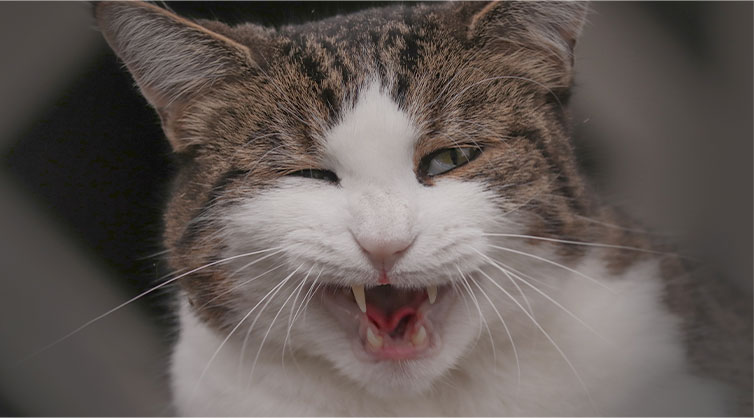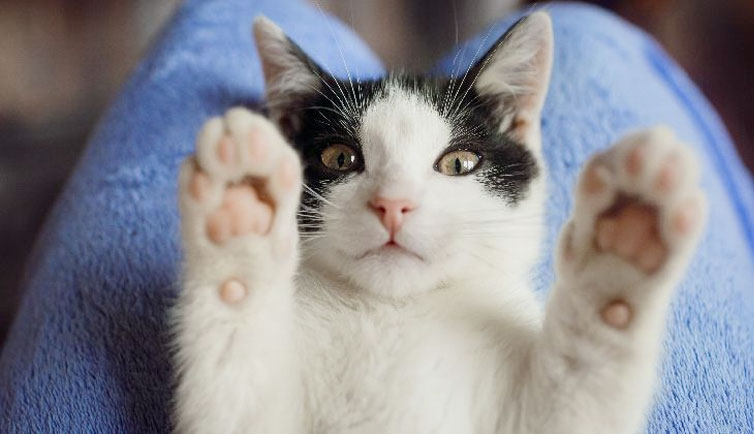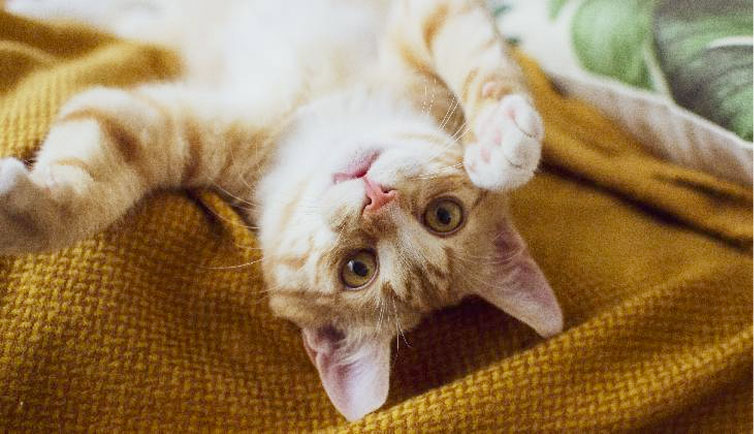Cat Behaviour: Understanding Your Cat’s Social Cues
Since the dawn of time, felines have been seen as unapproachable and mysterious. Despite their reputation as loners, you may share a close bond with your cat. Learn more about the true meaning behind typical cat behaviour today.
CATS

Posted by bravectosouthafrica – 14 October 2020
Your Dog May Have a Master, But Your Cat Has Staff…
Go back in history and you’ll find that cats were seen as and treated like gods by the ancient Egyptians. Felines who found themselves in Europe during the Middle Ages, on the other hand, weren’t looked upon with the same reverence. They were believed to be the companions of witches and thus were met with condemnation.
Despite the different ways they were received during these periods, one thing remains constant: that a cat has always been seen as an unapproachable and mysterious creature. This is a reputation the modern, domesticated cat continues to bear until this very day.
When compared to dogs and in the grand scheme of things, cats were only adopted as a household pet fairly recently. The relationship between humans and dogs stretch back some 30,000 years – back to when they were first domesticated. A true bond between humans and cats was only forged a few thousand years ago. This may partially be because felines simply aren’t designed to be part of a social group, unlike our canine companions. A domesticated cat of today can trace their ancestry back to the African wildcat, which is well-known to be one of the animal kingdom’s greatest loners.
Although there are many mysteries about cats and their supposed loner-behaviour, it’s long been known that modern-day housecats share deep feelings and bonds with their owners. The amount of human social interaction a cat requires can vary considerably from individual to individual but learning to better read cat behaviour can help a great deal in understanding, as well as appreciating, our feline friends more.

Cat Behaviour Meanings: Deciphering Cat Code
Our cats display a great many behaviours that we try to interpret. As their owners, we make plenty of assumptions as to what their social cues and behaviours might mean. We only have a basic grasp of what they’re attempting to communicate to us. You may be surprised to learn that some of what we think we understand our feline friends are trying to say is, in fact, incorrect.
Your cat’s tail might be raised when they come to greet you as you return from work at the end of the day. They may then proceed to slide between your legs and even purr. These behaviours are often interpreted as signs that your cat is glad to see you again, but this isn’t necessarily the case… Read on for more on cats’ behaviour and the meanings behind them.
A Raised Tail
If your cat greets you with a raised tail, it’s likely this is, unfortunately, not an expression of their joy at being reunited with you. It’s, however, actually a signal that they’re willing to make contact. Think of a wild cat that’s out roaming amongst the high grass of the surrounding bush. They can only draw attention to themselves by raising their tail. This behaviour is a way of communicating that they are “ready to talk.”
Slipping Between Your Legs
When your cat starts to slip in and out between your legs, you’d be forgiven for thinking that this is a sign of your cat’s deep affections and wanting to keep you close. Typically, this behaviour isn’t a sign of their love. The reason they display this behaviour can either be because they want to get your attention (the likeliest reason being they’re looking for food) or they simply want to mark you as their territory.
The Reason Behind Purring
Purring is commonly associated with a happy cat or a cat that’s showing their human how much they love them. Research that has dived deeper into cat behaviour has come to show that cats will purr for various other reasons, aside from showing affection. Felines will also purr to serve as a self-soothing mechanism when they find themselves in uncomfortable situations. Another reason why a cat will purr is its use as a persuasive tool when they’re looking to gain something.
Be sure to read Bravecto®’s article on cat purring for more details.
And Finally, How to Know What Your Cat Is Saying When Kneading
The purest form of love your cat can show you is kneading. This behaviour can be traced back to your cat’s earliest days of kittenhood. Kittens will instinctively perform the act of kneading when nursing from their mother, to stimulate milk flow. If your cat enjoys nothing more than kneading on you, consider yourself truly blessed as it’s an indication that you could be one of their favourite people.
If you are wondering how to interpret the behaviour of a cat that’s not listed here, be sure to have a look at The Drake Center for Veterinary Care’s article on 13 Strange Cat Behaviours Explained. Start understanding your cat better now.

About Felines and Their Social Hierarchies
Within the feline world, there are some hierarchal structures but humans have very little impact on them. Female cats are, for example, far likelier to form communities than their male counterparts. It’s often seen that feral female cats form groups and within these groups, the cats who’ve had a litter and are busy raising kittens will quickly rise within the ranks. A spayed female, by contrast, will usually occupy the lowest ranks of the group’s hierarchy. There is clear solidarity amongst the group when it comes to female groups of cats. This isn’t the case when it comes to male cats.
Male cats will find their place within the hierarchy with a set of unwritten rules. This is true for both stray and domesticated felines. Male cats can grow extremely vicious when it comes to establishing and holding their rank within the hierarchy. This could be a problem for those who own more than one male cat. Neutering will oftentimes be the solution to gain some calm within a group of male cats.
Male housecats that live within the same household will usually make it obvious who outranks who, thanks to small gestures such as who gets to eat first, sleeping areas, etc.

About the Cat-Human Connection
The relationship between humans and dogs is far more clear-cut than the one between humans and cats. In a dog’s eyes, their humans are their ‘alphas’ – i.e. the leaders of their pack. This isn’t the case when it comes to our feline friends. A modern-day housecat seems to agree to adapt to their owner’s environment. All they ask in return is that we aim to keep them happy with frequent meals, a pleasant sleeping area, a cosy napping spot in the sun and some human company – when they’re looking for it.
There may not seem to be an exact science behind the human-cat connection, but researchers have been able to prove that there are remarkable mental and physical benefits of sharing a home with feline friends. This is fantastic news for any cat owner!
Studies have found that cat owners generally feel less nervous, are happier and more confident than people who don’t own a cat. If you own a cat then you can rejoice in the fact that cat owners have also been found to focus, sleep and face problems in their lives better than those without a cat. Additionally, experts have found that owning a cat helps to reduce stress and can help us to become more caring and sensitive. It may be beneficial for our physical health as well.
These reasons alone make it obvious as to why cats have been mythicized, loved and revered throughout the ages.
Keeping Kitty Safe From Parasitic Pests Year-Round
Your cat may enjoy feigning indifference when it comes to your relationship but as a good cat owner, you won’t be indifferent about their needs, especially when it concerns long-term health. Ticks, fleas and ear mites are common parasitic pests that can easily come to affect even your indoor cat. Keep them safe from pests for longer by choosing Bravecto®. Opt for the classic Bravecto® Spot-On for Cats or the latest in parasite protection technology – Bravecto® Plus for Cats.
Applying a single Bravecto® Spot-On treatment to the skin at the back of your cat’s neck will keep them safe from fleas and ticks for 3 whole months. Alternatively, one dose of broad-spectrum Bravecto® Plus will keep your cat protected against ticks, fleas and heartworm, PLUS it will treat roundworms, hookworms and ear mites for 3 months.
We need to remember that our cat’s internal health is just as important as their external health. Just because we can’t see it doesn’t mean it isn’t a problem. Roundworms, which are the most common intestinal parasite found in felines, affects up to 75% of our whiskered friends.
Stop stressing yourself and your cat out by applying monthly treatments, when you can use a treatment that lasts 3x longer with only 1 dose. You can also keep your cat up to date with their treatments by downloading our handy Bravecto® reminder mobile app. It’s simple: download the app, create a profile for your cat and select the last treatment and date you applied it. You will receive a reminder close to the next date your cat is due for a dose.
Subscribe to our Newsletter
Get to know your furry friend better! Sign up for all things dog- or cat-related.
The Hairy Facts about the dreaded hairball
12 April 2021
Help! My dog’s barking mad! Volume 2
12 April 2021
Your Itchy, Scratchy Cat – All About Cat Skin Problems
12 April 2021
The Dog’s Diet: A Bone of contention?
01 April 2021
Mango Fly Worms: How to Spot and Eliminate them
Posted on November 28,2019
Managing Mange And Mites In Your Dog
Posted on June 11,2018
Why Do Cats Purr and How? Learn What Your Cat Is Saying
Posted on October 14,2020
How to Get Rid of Ear Mites in Dogs
Posted on November 06,2019









